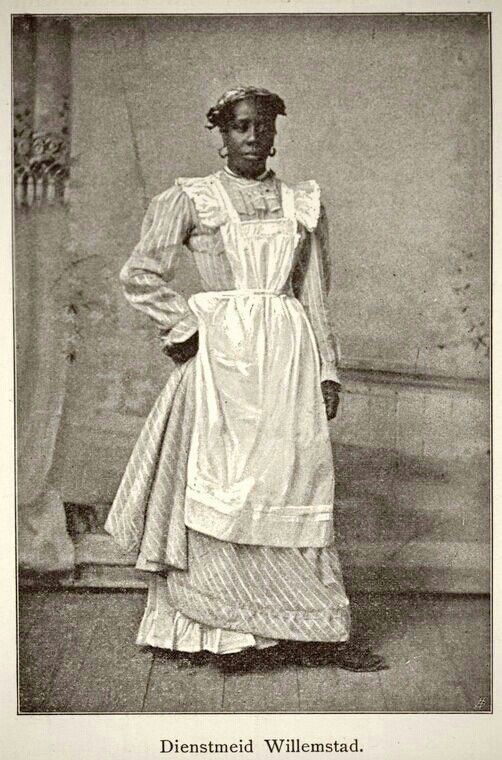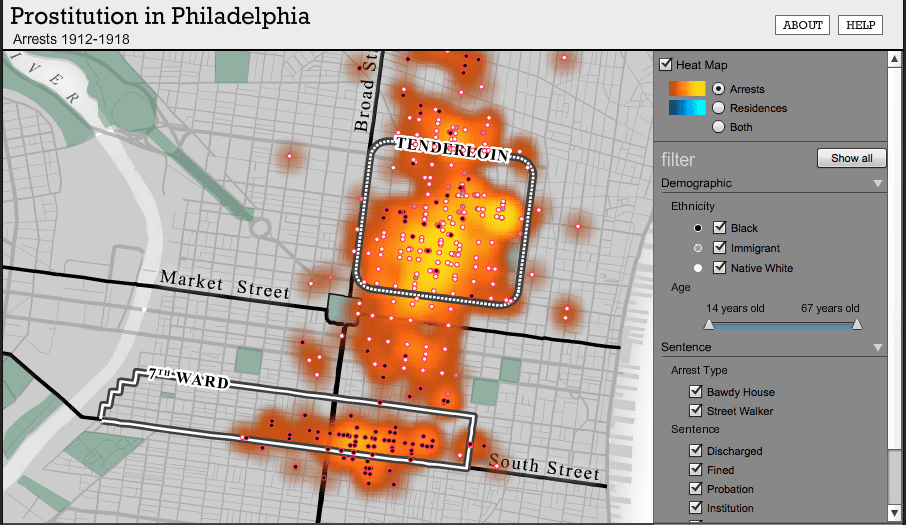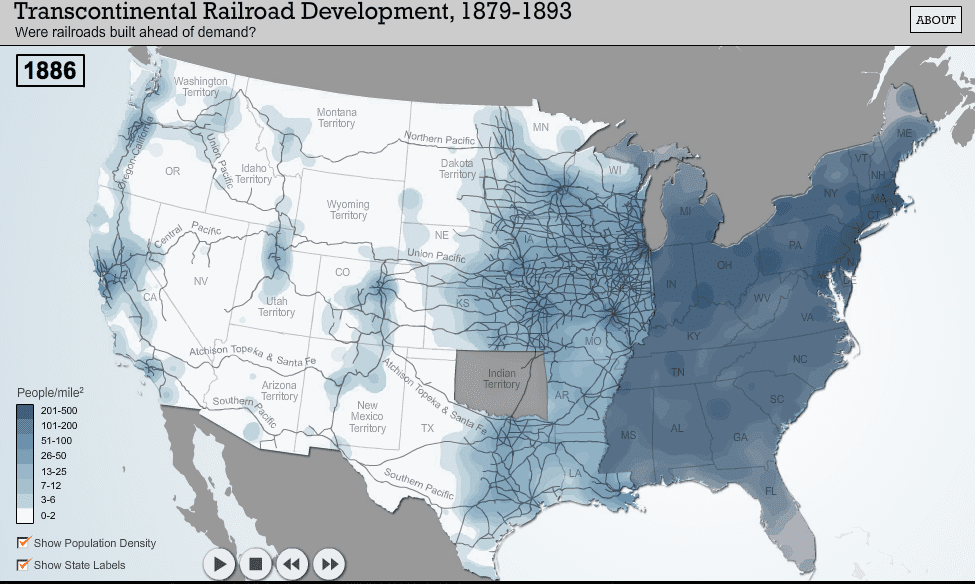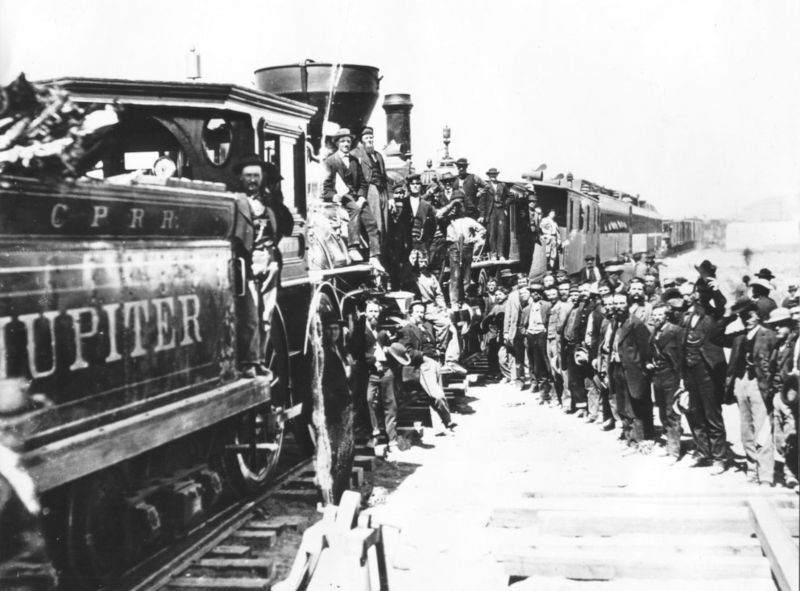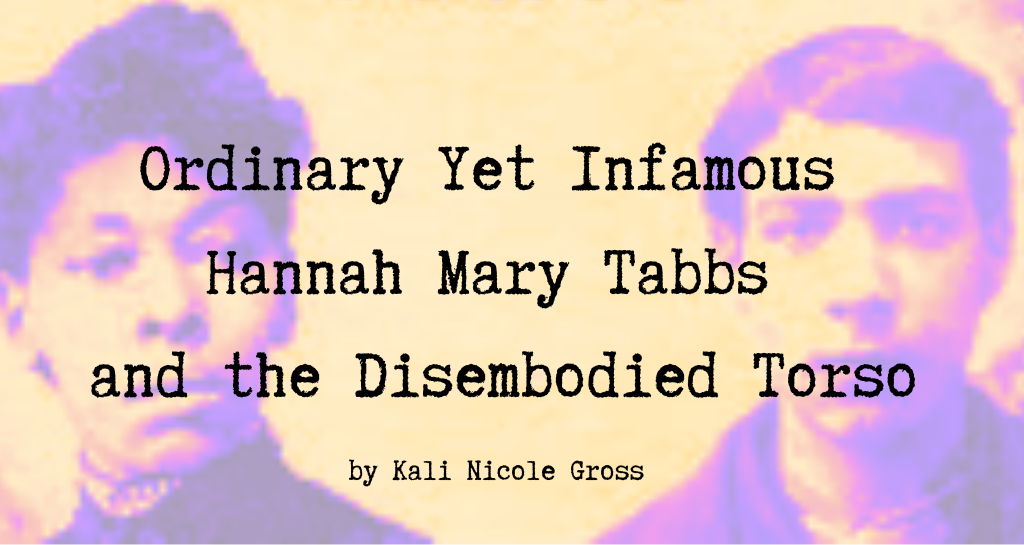
The discovery of a headless, limbless, racially ambiguous human torso near a pond outside of Philadelphia in 1887, horrified area residents and confounded local authorities. From what they could tell, a brutal homicide had taken place. At a minimum, the victim had been viciously dismembered. Based on the circumstances, it also seemed like the kind of case to go unsolved. Yet in an era lacking sophisticated forensic methods, the investigators from Bucks County and those from Philadelphia managed to identify two suspects: Hannah Mary Tabbs, a black southern migrant, and George Wilson, a young mulatto that Tabbs implicated shortly after her arrest. The ensuing trial would last months, itself something of a record given that most criminal hearings wrapped up in a week or so. The crime and its adjudication also took center stage in presses from Pennsylvania to Illinois to Missouri.

The nature of the case allowed otherwise taboo subjects such as illicit sex, adultery, and domestic violence in the black community to become fodder for mainstream public discourses on race, gender, and crime. At the same time, the mixed race of the victim and one of his assailants, George Wilson, would further inflame public anxieties about shifting notions of race and power in the Post-Reconstruction era, especially in regard to miscegenation and passing. The investigation itself and the treatment of the African Americans involved also afford a rare window onto early bigoted police practices such as racial profiling and issues of police brutality as well as sketching a nuanced portrait of intraracial violence. The murder and its investigation shed rare light on the legal responses to urban violence and show how those responses fundamentally contributed to crime in the black community.

Equally important is that a wealth of records and press coverage of the case allows for a richer understanding of the life of the infamous Hannah Mary Tabbs, the otherwise ordinary black woman at the heart of the story. What makes Tabbs such a provocative figure is that her life encompassed an extreme combination of the mundane and the extraordinary—a range that more wholly elucidates the complexities of black urban life. In many respects, Tabbs embodied those traits most common to the city’s black southern migrants. Like nearly fifteen percent of the city’s black residents, she migrated from Maryland roughly a decade after the Civil War. In accord with ninety percent of working black women in Philadelphia, she labored as a domestic—first for a Center City attorney and later for wealthy farmers in Eddington, where the torso would be found.
But Hannah Mary Tabbs also possessed a darker side. She had an adulterous affair with the victim, a man ten years her junior and, at the very least, participated in his murder. The home that she shared with her husband doubled as the scene of the crime. John Tabbs had an airtight alibi. Hannah Mary, however, could not account for her whereabouts and during the investigation, several witnesses would come forward and testify to her long history of violence. In addition to threatening her immediate family members, including her husband, she was reputed to have routinely and “violently insulted inoffensive persons.” The range of victims knew few boundaries, young and old, male and female alike—yet she never attacked whites. Tabbs undoubtedly knew all too well of the inadequacy and injustice of police protection for the black community, as well as the severity of the consequences she would face if she deigned to assault a white citizen.
Yet Hannah Mary’s violence also had practical functions. Black women were especially vulnerable to violent crime and had little recourse with respect to justice. Being an all-around tough customer could serve as its own protection—people in the neighborhood knew that Hannah Mary was not someone to be messed with.
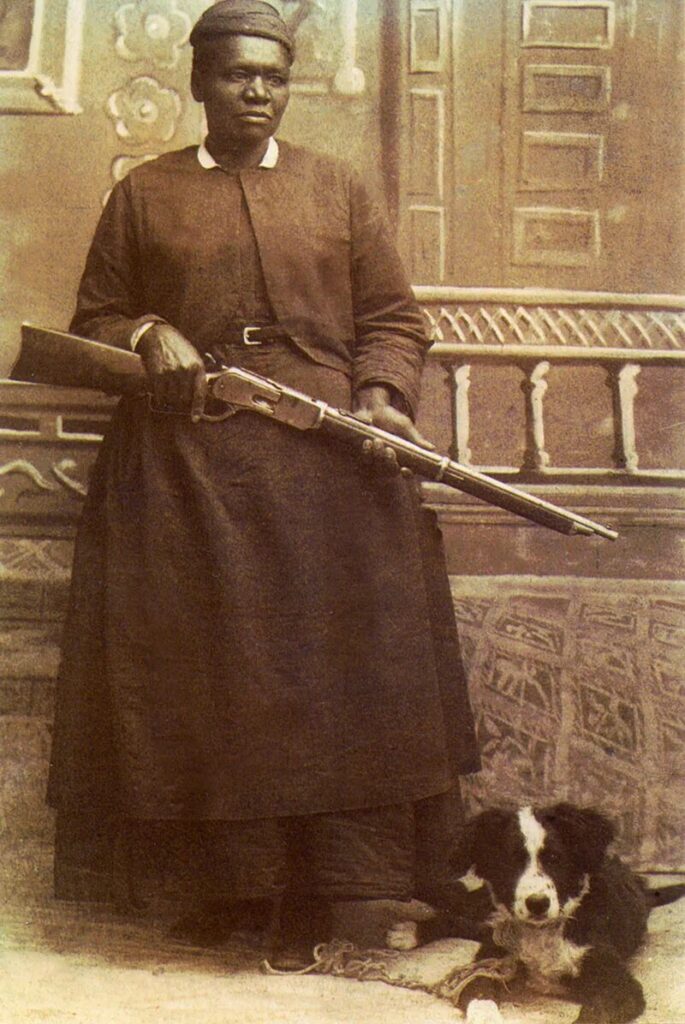
These aspects of her life, when taken together with Hannah Mary’s experiences in Philadelphia’s justice system, distinguish her from many of her peers. But where Hannah Mary Tabbs’s life diverges from the “norm” effectively maps the typography of black daily life as well as urban social strife. Her relationships offer an unusual glimpse of domestic violence—one that challenges customary definitions. Tabbs’s skirmishes with the victim, her neighbors, and family members provide a broader view of social tensions and the kinds of violence that occurred within black families.
Her erotic pursuits, too, afford a different understanding of how black women in the nineteenth century navigated sexuality. Most historians interested in black sexuality point to black women dissembling their sexuality in an effort to stave off potential sexual attacks. While certainly true, this phenomenon has made it difficult for historians to get a sense of how African Americans engaged in sexual pleasure. Tabbs’s passionate affair along with how she used violence to safeguard the relationship move us past silence about black women’s desire for sexual gratification at the same that it points to the lengths that some might have had to go to obtain it.
This case, this story, and the black woman at the heart of it forces us to move past binary notions of race, gender, and sexuality but also, too, it resists snap judgments about who exactly is good or evil and calls into question the validity of standard notions of justice.
This piece was adapted from Kali Nicole Gross’s new book: Hannah Mary Tabbs and the Disembodied Torso: A Tale of Race, Sex, and Violence in America (Oxford University Press, 2016).
For further reading, see:
Anne Butler, Gendered Justice in the American West: Women Prisoners in Men’s Penitentiaries (1997).
A seminal examination of women’s experiences in the penal system in the West in late nineteenth and early twentieth centuries, Butler unearths the unending violence women, particularly women of color, were subjected to in custody. At the same time, it gives voice to figures that rarely speak in history.
Mara Dodge, “Whores and Thieves of the Worst Kind”: A Study of Women, Crime, and Prisons, 1835-2000 (2006).
Dodge provides an exhaustive study of the histories of women incarcerated from the early nineteenth century to the twenty-first. She meticulously examines the gendered treatment of female inmates punished for bad manners, fighting, and lesbian relationships. The book shows how race and gender collided with the criminal justice system.
Cheryl D. Hicks, Talk with You Like a Woman: African American Women, Justice, and Reform in New York, 1890-1935 (2010).
This work is a rich examination of the experiences and views of black working-class women who found themselves enmeshed in the criminal justice system in early-twentieth-century New York. In addition to exploring the impact of urban and penal reform on those black women, Hicks critically contrasts the racial uplift agendas of both middle-class black and white female reformers.
Talitha L. LeFlouria, Chained in Silence: Black Women and Convict Labor in the New South (2015).
Dr. LeFlouria’s riveting work powerfully unearths the experiences of Georgia’s exploited and often overlooked labor force, namely black female convicts. Through painstaking research, she portrays black women as sentient beings (humans who had lives, loves, triumphs, and sorrows) and as prison laborers brutalized by convict leasing.
LaShawn Harris, Sex Workers, Psychics, and Numbers Runners: Black Women in New York City’s Underground Economy (University of Illinois, 2016).
Dr. Harris’s extraordinary book offers an unprecedented account of African American women’s employment outside of the customary realms of domestic service and agricultural work. It is a provocative examination that compels readers to interrogate notions of labor through an intricate, incisive intersectional lens.
The views and opinions expressed in this article or video are those of the individual author(s) or presenter(s) and do not necessarily reflect the policy or views of the editors at Not Even Past, the UT Department of History, the University of Texas at Austin, or the UT System Board of Regents. Not Even Past is an online public history magazine rather than a peer-reviewed academic journal. While we make efforts to ensure that factual information in articles was obtained from reliable sources, Not Even Past is not responsible for any errors or omissions.
